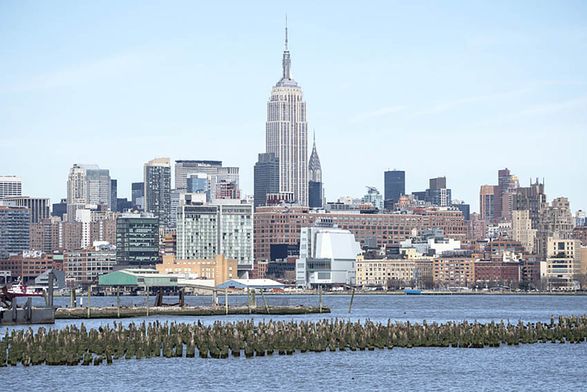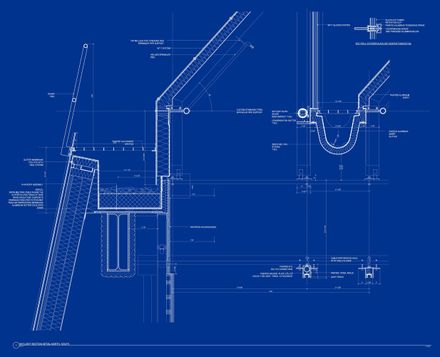
The Whitney Museum of American Art at Gansevoort
THE WHITNEY MUSEUM OF AMERICAN ART AT GANSEVOORT
Cooper Robertson, Renzo Piano Building Workshop
ARCHITECTS
Cooper Robertson, Renzo Piano Building Workshop
LOCATION
New York, United States
CATEGORY
Cultural Architecture, Museum
Year
2015
CAD OPERATOR
M.Ottonello
PHOTOGRAPHS
Nic Lehoux, Timothy Schenck, Karin Jobst
AUDIOVISUAL EQUIPMENT, ACOUSTICS
Cerami & Associates
LEED CONSULTANT
Viridian Energy Environmental
AREA
7520.0 m²
STRUCTURE
Robert Silman Associates
MANUFACTURERS
Campolonghi, Canam, Decoustics, Josef Gartner, Jonathan Metal & Glass, Post Road Iron Works, Same As Ornamental
PROJECT MANAGER COOPER ROBERTSON
Thomas Wittrock, aia, Leed Ap
SR TECHNICAL MANAGER COOPER ROBERTSON
Thomas Holzmann
MEP, FIRE PREVENTION
Jaros, Baum & Bolles
LIGHTING
Arup
FACADE ENGINEERING
Heintges & Associates
DESIGN TEAM
K.Schorn, t.Stewart, s.Ishida (partner), a.Garritano, f.Giacobello, I.Guzman, g.Melinotov, l. Priano, l.Stuart, c. Chabaud, j.Jones, g.Fanara, m.Fleming, d.Piano, j.Pejkovic
PROJECT ARCHITECT COOPER ROBERTSON
Greg Weithman, Aia
INTERIORS COOPER ROBERTSON
Lori Weatherly
PROJECT ADMINISTRATOR COOPER ROBERTSON
Lauren Weisbrod
MODELS
F.Cappellini, f.Terranova, I.Corsaro
THEATRE EQUIPMENT
Theatre Projects
CONSTRUCTION MANAGER
Turner Construction
AUDIOVISUAL EQUIPMENT, ACOUSTICS
Cerami & Associates
LANDSCAPING
Piet Oudolf, Mathews Nielson
DESIGN TEAM COOPER ROBERTSON
Kieran trihey, aia, leed ap, weifang lin, aia, leed ap, erin flynn, ra, leed ap, christopher payne, aia, leed ap, annalisa guzzini, eric ball, atara margolies, leed ap, german carmona, jenelle kelpe, marlena lacher, eric boorstyn, jeremy boon-bordenave
The Whitney Museum is building itself a new home in downtown Manhattan’s Meatpacking District.
Due to open in 2015, the project will substantially enlarge the Whitney’s exhibition and programming space, enabling the first comprehensive view of the Museum’s growing collection, which today comprises more than 19,000 works of modern and contemporary American art.
Founded in 1930, the Whitney moved to its current Madison Avenue home, designed by Marcel Breuer, in 1966.
At the time, its collection numbered some 2,000 pieces of 20th-century American art, so its nearly 100-fold expansion needs space to flourish.
The new museum is to be situated in New York’s vibrant Meatpacking District.
Fronting onto Gansevoort Street, the site lies between the Hudson and the High Line, Manhattan’s recently completed elevated urban park, built on a disused elevated spur of the 1930s New York Central Railroad.
Clad in pale blue-grey steel panels, the new, eight-storey building is powerfully asymmetrical, with the bulk of the full-height museum to the west, Hudson-
-side, with tiers of lighter terraces and glazed walkways stepping down to the High Line, embracing it into the project.
The Museum is entered via a dramatically cantilevered ‘largo’, a public space that serves as a kind of decompression chamber between street and museum, a shared space, with views to the Hudson and the High Line entrance just a few steps away.
Accessed from the ‘largo’, the main entrance lobby also serves as a public gallery – of free-entry exhibition space.
Level three houses a 170-retractible seat theatre with double-height views over the Hudson River, along with technical spaces and offices.
Some 50,000 sq. ft (4 650 sq. m) of gallery space is distributed over levels five, six, seven and eight, the fifth level boasting a 18,000 sq ft (1670 sq. m), column-free gallery – making it the largest open-plan museum gallery in New York City.
This gallery is reserved for temporary exhibitions and its expansive volume will enable the display of really large works of contemporary art.
The permanent collection is exhibited on two floors, level six and seven. These two floors also step back towards the west to create 13,000 sq ft (1 200 sq. m) of outdoor sculpture terraces.
Museum offices, education centre, conservation laboratories and library reading room are situated north of the building’s core on levels three to seven, including a multi-use theatre for film, video and performance on level five.
Finally, on the top floor is the ‘studio’ gallery and a café, naturally lit by a skylight system in saw-tooth configuration.



































